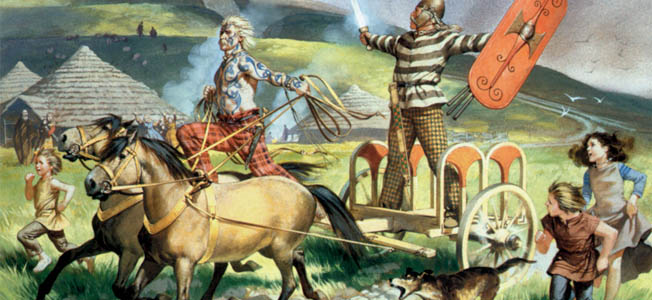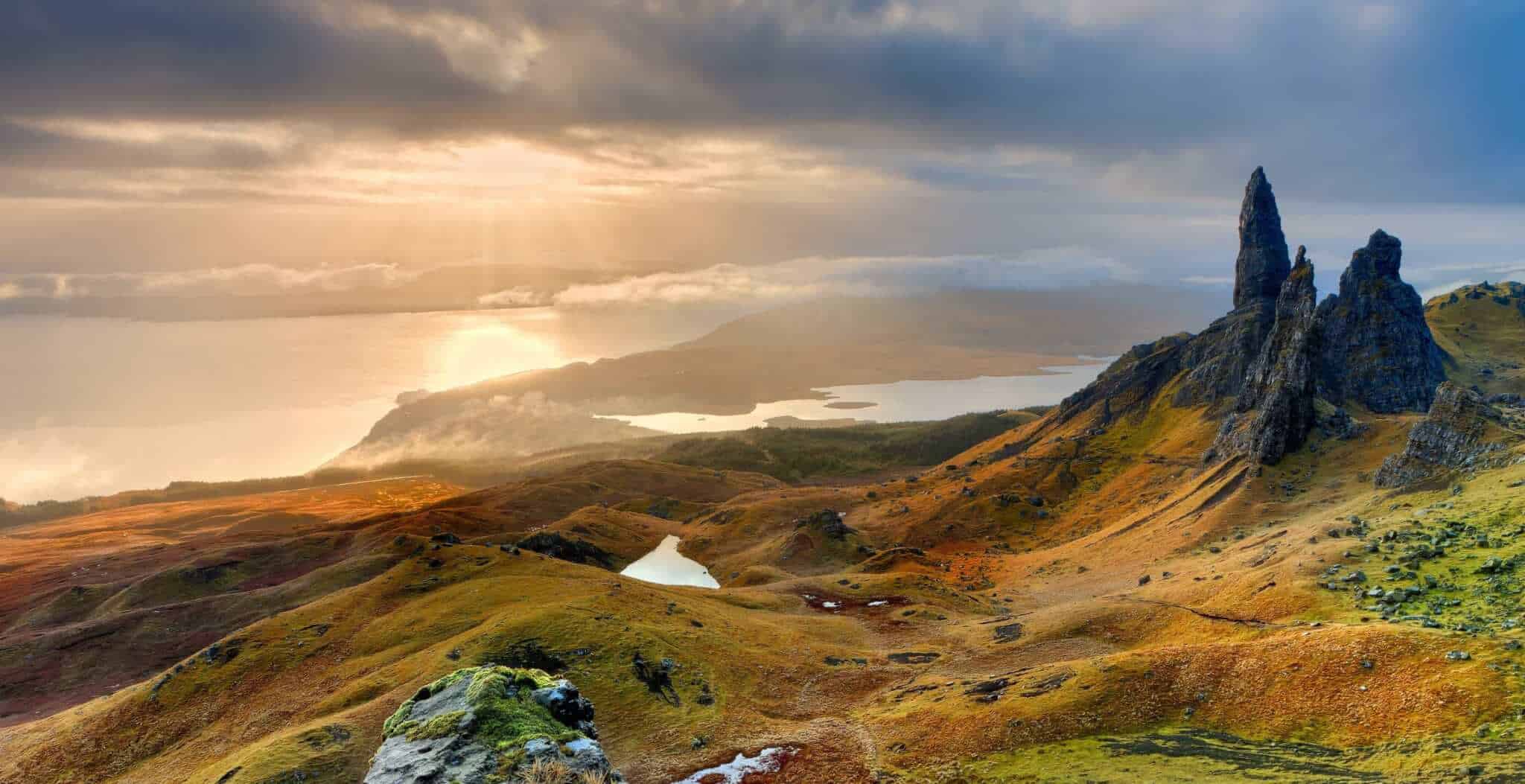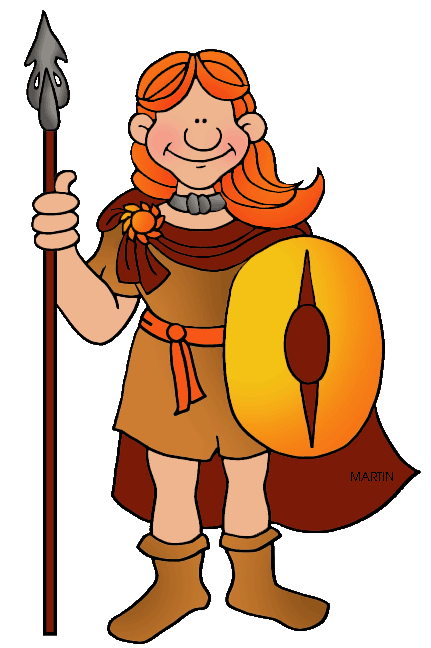A History of Celtic Britain
Data: 3.09.2018 / Rating: 4.6 / Views: 657Gallery of Video:
Gallery of Images:
A History of Celtic Britain
History of English This page is a short history of the origins and development of the English language The history of the English language really started with the arrival of three Germanic tribes who invaded Britain during the 5th century AD. The second lesson concentrated on reading a contemporary description of Britain during the Celtic period, extracting information and preparing to produce a travel brochure poster to advertise the mystery holiday on the island. Neil Oliver explores the age of Celtic Britain a time of warriors, druids, and kings of unimaginable wealth. Neil encounters a celebrated warrior from 300 BC, owner of. Navigate 'A History of the British Nation' Celtic Britain and the Roman Occupation Roman Invasion Occupation of Britain Hadrian's Wall near Housesteads, Northumberland. Julius Caesar The British Isles first come in contact with the general current of history in the year 55 B. In that year Julius Caesar, then engaged in the subjugation. The Sea Kingdoms is an attempt at a history of Celtic Britain and Ireland but, by the nature of the subject and the sources, it's more a series of impressions and snapshots: places, events, people, all serving to illuminate some aspect of the other history of these islands, the history that has never been written but has been sung, recited, felt. The title of this series 'Celtic Britain, should really be called 'Ancient Britain Part 2, as it is a direct follow on from Neil Oliver's previous series. Alistair Moffat's journey, from the Scottish islands and Scotland, to the English coast, Wales, Cornwall and Ireland, ignores national boundaries to reveal the rich fabric of culture and history of Celtic Britain which still survives today. Celtic tribes and Caesar: 5554 BC It is not known precisely when the Celts first enter Britain in their steady expansion outwards from central Europe. But Caesar states, in his own account of his campaigns, that they have been migrating across the Channel since at least the 2nd century BC. Books shelved as celtichistory: The Gods of the Celts by Miranda AldhouseGreen, The Ancient Celts by Barry W. Cunliffe, The Druids by Stuart Piggott, T Map of Celtic Britain and Northern Gaul 1st Century B. : Map of Celtic Britain and Northern Gaul 1st Century B. The Britons, also known as Celtic Britons or Ancient Britons, were Celtic people who inhabited Great Britain from the British Iron Age into the Middle Ages, at which point their culture and language diverged into the modern Welsh, Cornish and Bretons (among others). Watch A History of Celtic Britain, A History of Celtic Britain Full free movie Online HD. In four chapters, largely based on and illustrated with archaeological finds and sites, Neil Oliver explains how, as far as is known, the Iron Age Celtic Watch4HD. com This alternate history related article is a stub. Boudica fights Suetonius and succeeds in driving out the Romans. Britain rebuilds and becomes strong again, keeping the Druidic religion and Celtic values. Prehistoric Britain: The Rollright Stones A Neolithic stone circle in the English Midlands (c. Not until the arrival of the Romans do any written records of English history appear. For the many centuries before, there is only archaeological evidence of. The Celtic kings of southern Britain make good use of the years following Caesar's incursions. His failure to do more than come and see, without conquering, convinces them that the Channel is a safe defence. The natural extremity of the Roman empire is the coast of Gaul. Master storyteller Neil Oliver brings history to life, recounting brutal Iron Age battles and Celtic Britain's occupation by the world's mightiest empire Rome. A stone sculpture of a Celtic hero is displayed in the National Museum in Prague, Czech Republic. Credit: Kozuch Creative Commons. The Celts refer to a people that thrived in both ancient. Celtic is a powerful evocative word, but it is a cultural label rather than an ethnic identity. Over the last 2, 500 years, the name Celts has held many different meanings. Celtic languages were spoken in the last centuries before the Common Era (also called the Christian Era) over a wide area of Europe, from Spain and Britain to the Balkans, with one group (the Galatians) even in Asia Minor. Very little of the Celtic Other considerations, however, show that Celtic. The Romans wrote down their history, their literature and their laws. Their language was called Latin, and it wasnt long before some people in Britain started to use it too. A History Of Celtic Britain is a TV show on Australian national television from SBS ONE with an average rating of 3. We have 4 episodes of A History Of Celtic Britain in our archive. History Documentary hosted by Neil Oliver, published by BBC in 2011 English narration [ Cover[ InformationA History of Ancient Britain Series One A History Of Ancient Britain will turn the spotlight onto the very beginning of Britains story. From the last retreat of the glaciers 12, 000 years ago, until the departure of the Roman Empire in the Fifth Century AD this. PreCeltic inhabitants of western Europe included Bronze Age settlers, such as the Lusitaninans, Basques, Etruscans, and Belgae. As a commenter made clear, the Belgae inhabited modern Belgium and gave the area its current name. British History PreCeltic Britain Timeline 500. 000 BC 700 BC Neanderthal Homo Sapiens Britain island Farmers arrive Stonehenge The Celts I I I I I I 500. 0000 BC Britain and Europe are connected with a land bridge. Your browser does not currently recognize any of the video formats available. Click here to visit our frequently asked questions about HTML5 video. The traditional time divisions into which prehistory is divided are not necessarily reliable. They were devised in the early 1900s when the level of archaeological expertise was low, compared to today. Celtic religion, religious beliefs and practices of the ancient Celts. The Celts, an ancient IndoEuropean people, reached the apogee of their influence and territorial expansion during the 4th century bc, extending across the length of Europe from Britain to Asia Minor. Celtic tribes continued to migrate to Britain and to dominate the country. Use our interactive map of Celtic Lands and the Roman Empire to find out more about events that shaped their history. On the map you will see how their lands expanded but how they eventually were overtaken by the Romans. 40K views 5 comments Add to Favorites. Storyline Neil Oliver returns to continue his epic story of how Britain and its people came to be. Diving for 3, 000yearold treasure and potholing through an ancient copper mine he discovers how a golden age of bronze collapsed into social and economic. A resource for learning and exploring the long, fascinating history of Britain. The History of Britain is intended for Jump to. Celtic Britain UPDATEPosted on April 24, 2014 by TimI kind of breezed through the European origins. British Warriors vs Roman Invaders A History of Celtic Britain Episode 3 Preview BBC Two BBC. Royal Britain: An Aerial History of the Monarchy. The History of Celtic Britain can be seen clearly through the following set of videos created by teachers and shared for other teachers to use. The History of Celtic Britain can be seen clearly through the following set of videos created by teachers and shared for other teachers to use. but the same could be said for many other periods of history. The things we have labelled 'Celtic' icons such as hillforts and art, weapons and jewellery were more. Celtic Britain, which spanned much of these periods, was an organised agricultural community and the 'celtic fields' of the Iron Age saw the introduction of a pattern of regular rectilinear fields. The evidence for this is clear from aerial photographs of land which has remained undisturbed. Noone called the people living in Britain during the Iron Age, Celts until the eighteenth century. In fact the Romans called these people Britons, not Celts. The name Celts is a 'modern' name and is used to collectively describe all the many tribes of people living during the Iron Age. Jonathan West from Butser Ancient Farm talks about the Celtic way of life. He explains that to see any Celtic historical evidence is rare, as all their buildings were made from biodegradable. Documentary TV Series (2011 ) Episode Guide. In four chapters, largely based on and illustrated with archaeological finds and sites, Neil Oliver explains how, as far as is known, the Iron Age Celtic tribes known as the Ancient. Once having traversed the threshold, the hero moves in a dream landscape of curiously fluid, ambiguous forms, where he must survive a succession of trialsThe hero is covertly aided by the advice, amulets, and secret agents of the supernatural helper whom he met before his entrance into the region. The Iron Age is the age of the Celt in Britain. Over the 500 or so years leading up to the first Roman invasion a Celtic culture established itself throughout the British Isles. For a start, the concept of a Celtic people is a modern and somewhat romantic reinterpretation. With Neil Oliver, Alison Sheridan, Paul Bahn, Martin Bell. Neil Oliver tells the epic story of how Britain and its people came to be over thousands of years of ancient history the beginnings of our world forged in ice, stone, and bronze. The inhabitants of Great Britain when the AngloSaxons arrived were mostly romanized Celts who spoke Latin and a Celtic language that was the ancestor of modernday Welsh and Cornish. (In what is now Scotland, the inhabitants spoke a different Celtic language, Gaelic, and perhaps also Pictish, but not much is known about Pictish. ) A History of Ancient Britain Neil Oliver tells the epic story of how Britain and its people came to be over thousands of years of ancient history the beginnings of our world forged in ice, stone. The Britons (also called Brythons) were the people who spoke a Celtic language known as Common Brittonic. They lived in Great Britain during the Iron Age, Roman Britain and the SubRoman period following the Romans leaving Britain. After the AngloSaxons arrived many of the Britons were absorbed into the new culture and became English. Others withdrew into Wales, Cornwall and southern Scotland. Do you mean Celtic Britain as in preRoman, or 'Celtic' as in RomanoBritons? Because you mean the former, the Saxons are the least of your worries. Apr 14, 2011 Posted in Ancient Celtic History, Celtic Britain History, Celtic Culture, Celtic Heroine, Celtic Warrior, Heroine Mythology, Historical Fantasy Tagged Ancient Britain, Ancient Britain and Rome, Ancient Celtic History, Apollo's Raven, Celtic heroines, Celtic spirit warrior, Celtic spiritual warrior, Celtic Woman Warrior, Heroine. Britain (or more accurately, Great Britain) is the name of the largest of the British Isles, which lie off the northwest coast of continental Europe. The name is probably Celtic and derives from a word meaning 'white this is usually assumed to be a reference to the famous white Cliffs of Dover. Not only Celtic Britain is covered but the prehistory time frame as well so this documentary covers thousands and thousands of years. Since most documentaries cover Britain around 1BCE and above there was a lot of material covered that I wasn't expecting to learn but I'm glad that I did. The Irish Goddess Morrigan was most famed for representing the Raven of War, she first appeared in Irish literature in 876 AD, though the Raven of war has a bloodier more gruesome past than this within literature and can be dated as far back as 560 AD.
Related Images:
- Web platform installer 3 offline messages
- Pretty little liars s03
- Que es reproduccion asexual
- Le gendarme et les
- Lost season 2 1080
- Keep your head up andy
- Commie zetsuen no tempest
- War nl sub
- Cs5 photoshop tutorial
- South africa pictures
- Fifa 15 pc
- Vampiro la mascarada
- La Torre Nera
- The walking dead saison 3 episode 9 vf
- Guitar hero pc
- Night of the museum 3
- London olympics closing
- Alone And On Foot Ignatius Of Loyola By Brian Grogan
- Power of focus
- A ciel ouvert
- Fly between falls
- Global English Macmillan Upper Intermediate
- Person of 720p s03e16
- Come un uomo sulla terra
- Les Paraboles De Jesus En Bd
- Windows 2003 64 bit
- Office 2018 professional sp1
- Captain america the winter soldier captain america the winter soldier
- Ms word 2018 full version
- The mothman prophecies xvid
- Forma musical
- Horriblesubs black bullet 720
- Vicky donor 1080p
- The Fast and the Furious mp4
- An english girl in prague
- Date a live bd 720
- Chineasy The New Way To Read Chinese
- My scary movix
- The night they drove old dixie down
- Fluid Volume 02 Scene 02
- 2 37 2018
- Pokmon xy
- Strap Attack 14
- Build the perfect bug out vehicle
- Ford 1110 Tractor Workshop Repair Service Manual
- Rahsaan roland kirk
- Zimbra vmware appliance download
- Prosthodontics by deepak nallaswamy pdf
- Game of thrones subs spa
- 21 2018 subs
- Sri Venkateswara Sahasra Namavali In Telugu Pdf
- Barbie and the sisters in a pony tale
- Electrical Engineering Books Sinhala
- Complete marvel 1962
- Ashampo photo optimizer
- Morning wood vero
- Saw 2 french
- Blue planet bbc 3of8
- Dave Brubeck Dave Digs Disney 24bit 96kHz FLAC
- Zero fairy tail
- Neon lights demi
- Purusha suktam in english pdf
- SAP Flexible Real Estate Management
- Language porter robinson
- Ashley wallbridge the inner me
- The Prestige
- E c was here
- The best of yngwie malmsteen
- Black Folks Guide to Business Success
- Aztec camera dreamland
- Vatsyayana Kamasutra 2
- The hobbit the desolation of smaug extended 3d
- Lifestyle young thug rich homie quan
- Windows 7 loader loader by daz
- Mike oldfield live at montreux
- Sims 2 enhancer












